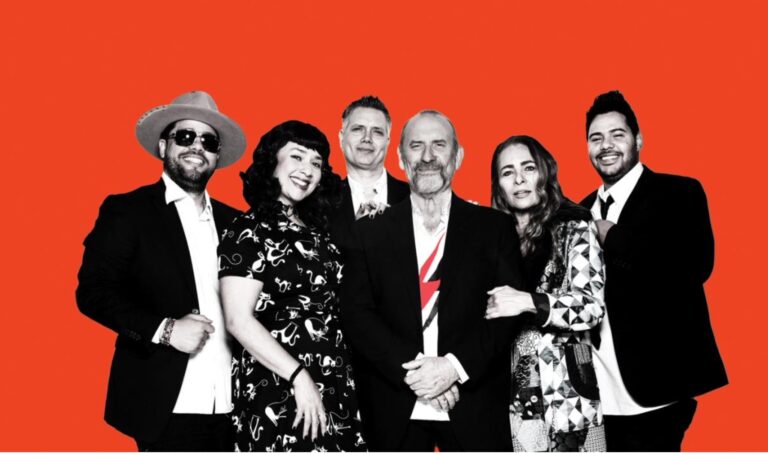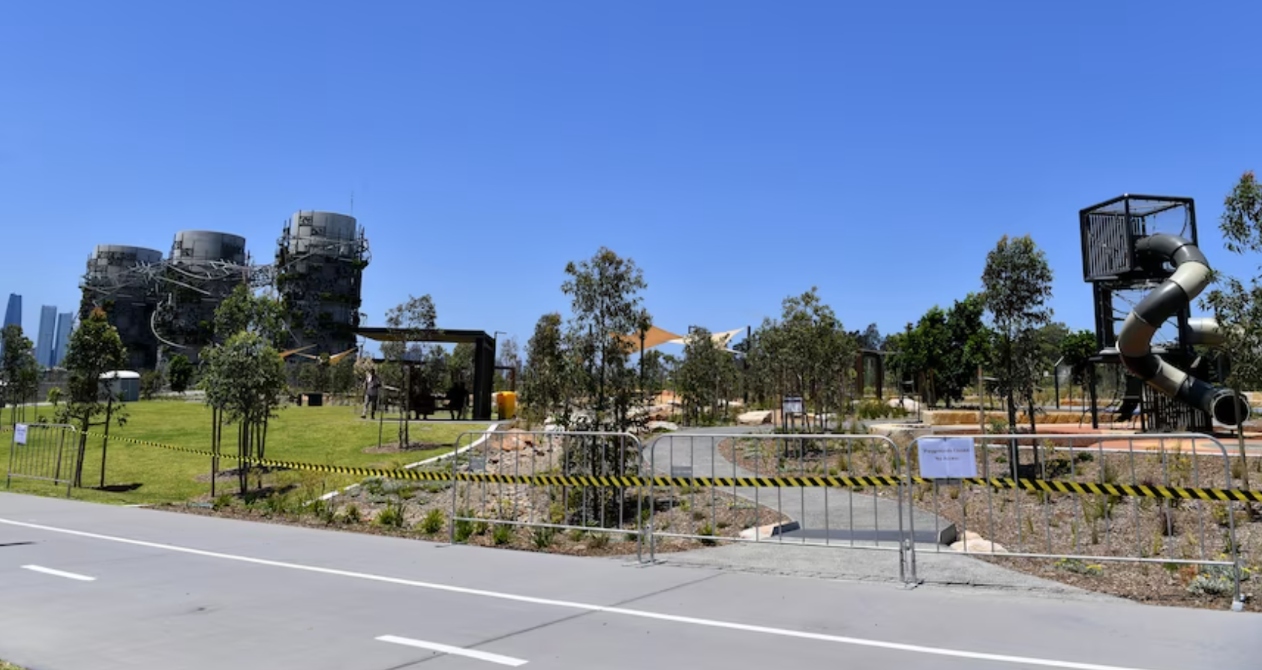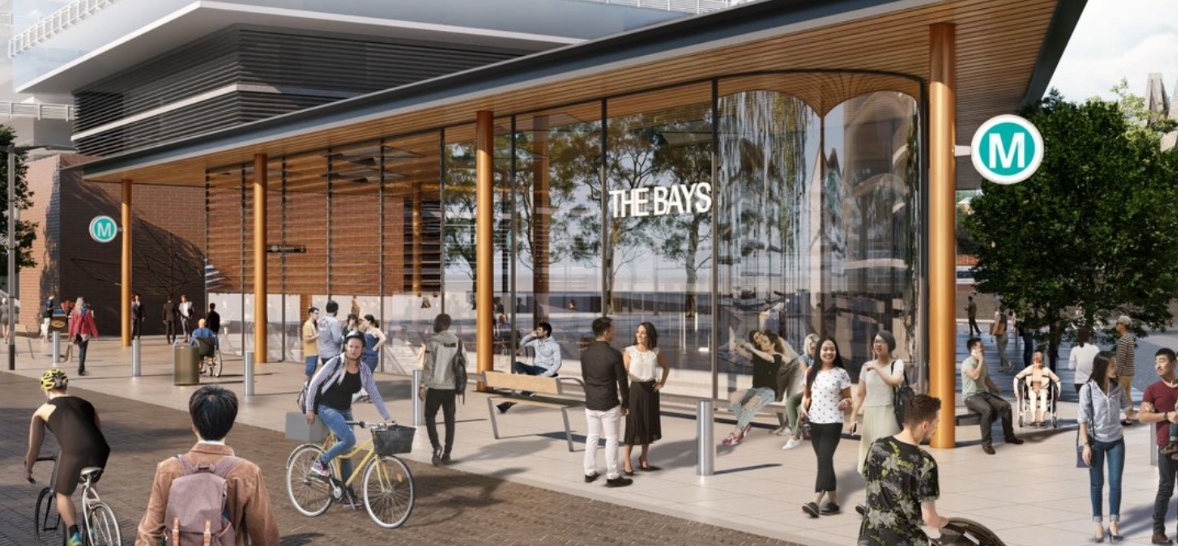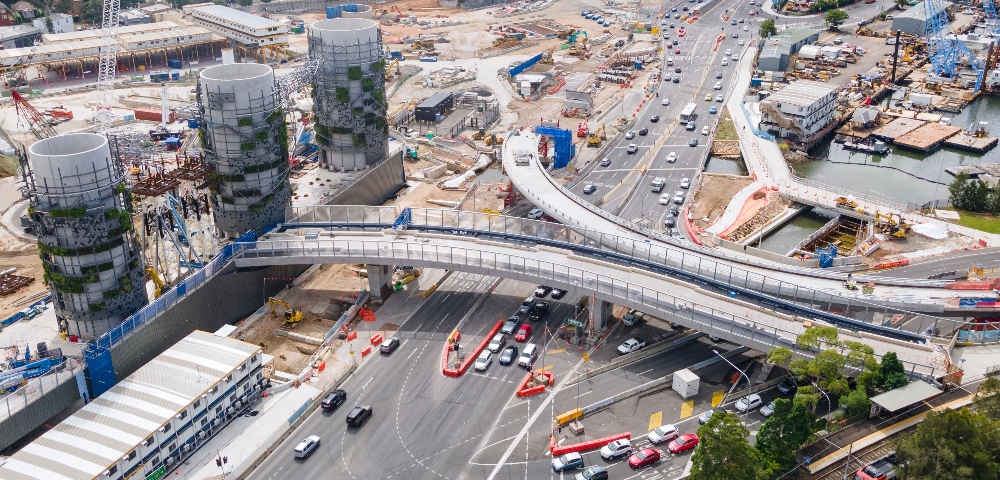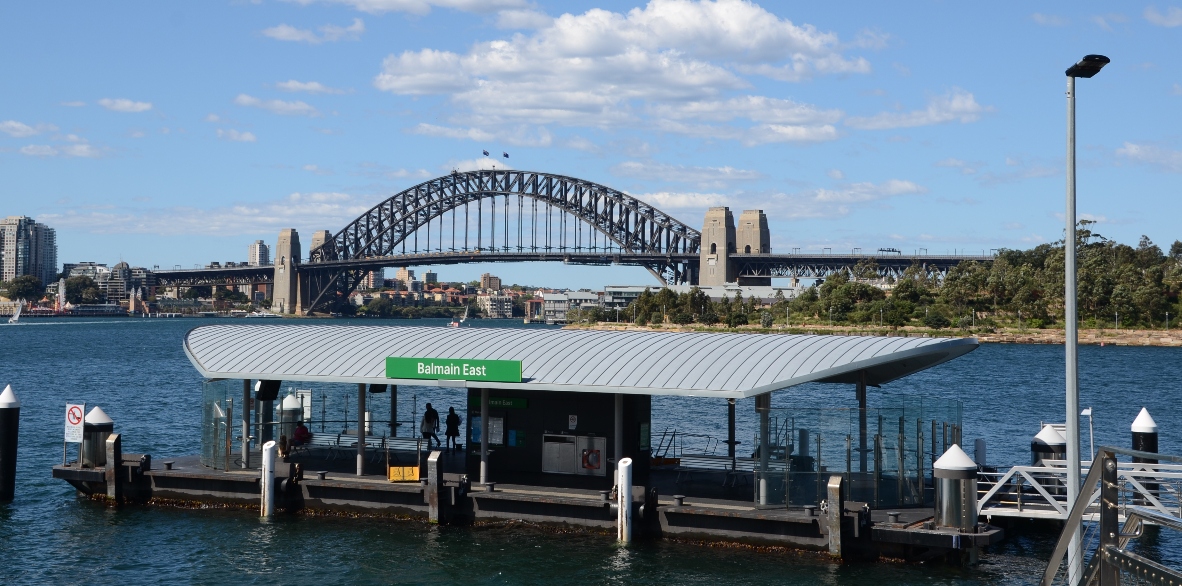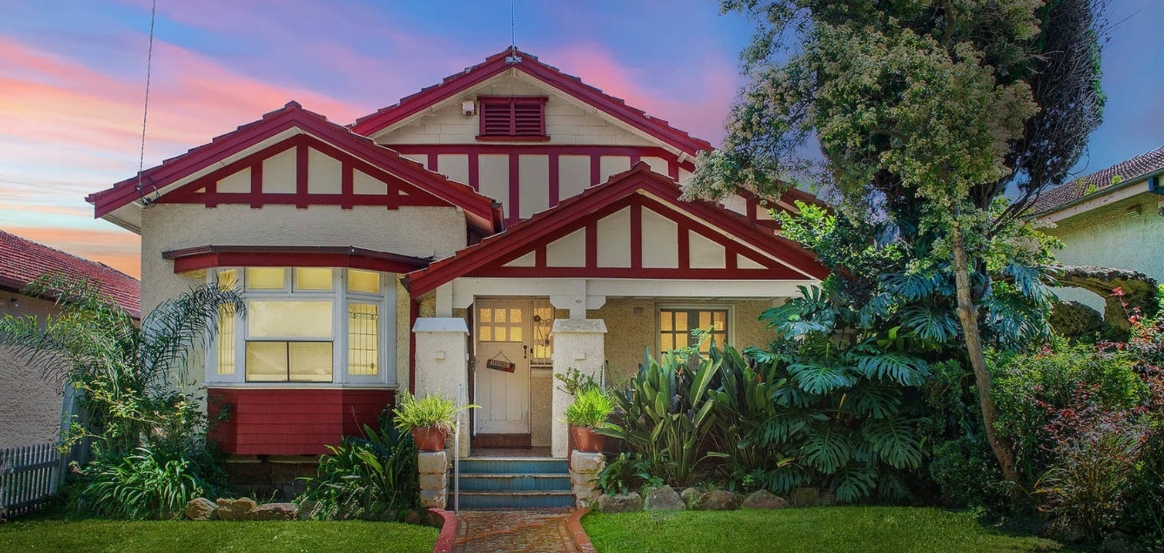
WestConnex takes its toll in Annandale

By WENDY BACON
WestConnex contractors chopped down scores more trees in Annandale late on Monday night, just hours after residents protested against the destruction of Buruwan Park, which will make way for road widening and a giant overpass across to Rozelle.
Since 2016, 8000 trees have been chopped down across Sydney’s Inner West by WestConnex, hundreds of them recently in Rozelle, Lilyfield and Annandale. Buruwan Park lies at the junction of The Crescent and City West Link, one of the busiest intersections in the Inner West. Twenty-year-old casuarina trees that were planted to soften the impact of these roads on residents and pedestrians have already gone. A huge old mature fig still stands.
Protestors know from experience that if they stand in the way of tree choppers, riot police will be sent to arrest them. They could potentially face years in prison under protest laws passed by the LNP government. But they say that they are not just protesting in the hope that someone in authority will grant the park a last-minute reprieve, but are also bearing witness to ongoing corruption and abuse of planning processes by the Gladys Berejiklian government.
Local Greens MP Jamie Parker, along with Greens and Independent councillors, joined protestors on Monday. Parker asked the crowd, “Where did this idea come from for WestConnex? What genius thought up this idea?” Many in the crowd called back the answer: “Nick Greiner.”
Greiner was NSW Liberal Premier in the early 1990s. After resigning, he became the grandfather of the toll road business. In 2011, the new Liberal government appointed him to head a new authority, Infrastructure NSW (INSW). INSW recommended WestConnex as the top priority for NSW transport. After the NSW government accepted the recommendation, Greiner later became a consultant for Transurban, which now owns 49% of WestConnex and dominates Australia’s tollway business.
New twist and turn
Greiner’s history is just one piece of evidence that explains why residents are so frustrated with what they see as the wholesale handing over of public accountability to private interests.
The introduction of the Rozelle overpass into the Westconnex plan is just the latest twist and turn in this saga.
The NSW Minister for Planning approved the WestConnex M4 M5 link between Haberfield and Rozelle in 2018. The approved project was very unclear in its impacts, which led to the NSW EPA to recommend that more work be done before approval. However, one impact that was clear was the obliteration of Buruwan Park. “The fact that the State Government has approved a design which permits this green space to be entirely wiped out shows complete contempt and disregard for the community, given issues with poor tree canopy in the inner west and the urgent need to address climate change,” said Richard Dudley-Smith, spokesperson for the Coalition Against WestConnex (CAW).
Three weeks ago, RMS lodged a ‘modification’ to the project. It included the overpass that was nowhere to be seen in the originally approved project. Residents and Councils have until September 16th to object to the latest changes. But not long after the modification was lodged, residents were notified that even before the latest design was approved, WestConnex contractors would destroy the park. CAW called for the tree destruction to be postponed until after the Department of Planning has assessed the modified design which is more visually intrusive than the design approved in 2018.
The Rozelle Interchange was originally to be built above ground. But the negative public reaction was so great that in July 2016, the then-Roads Minister Duncan Gay announced that the complicated interchange would be underground. This was a surprise to all, including staff at the Sydney Motorway Corporation that was then in charge of this stage of the project. City Hub observed the project designer telling residents at a feedback session that Duncan Gay’s change came through as an instruction rather than a change made on engineers’ advice. He said that at that stage, no practical design for the three-layered underground exchange existed. There was no acceptable tender to build this stage of the project, which meant that RMS took it back from the Sydney Motorway Corporation (SMC) that now owns and is responsible for all other WestConnex projects. Transurban will take over the project when it is built.
No three-level underground motorway interchange exists elsewhere in a densely settled urban area, so many believed the underground project would never be built. But the underground concept was approved. What few noticed was that the proposed Western Harbour Tunnel (WHT) design, released in mid-2018, included the overpass that has now suddenly appeared as part of WestConnex. The overpass will funnel traffic towards the CBD and the WHT, although the latter has not even yet been subject to an Environmental Impact Statement (EIS), let alone approved.
“The RMS and the contractor are proposing dramatic modifications that conflict with the original consent given to this project. The government hasn’t explored alternatives for this project, has delivered a woefully inadequate environmental impact statement and then gone on to ignore their own conditions of consent,” Greens MP Jamie Parker told City Hub.
Inner-West dystopia
There is one company that is a common factor across all stages of WestConnex and the WHT. This week City Hub took a look at AECOM, the company responsible for the WestConnex Environmental Impact Statements (EIS) for Stage 1, 2 and 3, this modification EIS and preliminary work on the WHT.
AECOM is a global company with strong investments in real estate, construction, environmental services and design. Only 8% of its business is conducted in the Pacific region. In NSW, it is deeply embedded in Transport NSW, which now includes NSW Roads and Maritime Services. A search shows that AECOM currently holds $477 million worth of NSW government contracts, most of them with RMS. Since Westconnex was privatised in 2015, its Sydney Motorway Corporation EIS contracts are no longer public but amount to many more millions. One of its current contracts includes a $181 million contract to be a “partner” in easing Sydney’s traffic congestions, which is quite separate from other large contracts for specific projects.
AECOM was one of a number of companies invited by the NSW government to help plan Westconnex in its initial planning stages in early 2012. This invitation was issued when AECOM was still involved in lawsuits over its misleading traffic projections in early private tollway projects. It subsequently paid more than $250 million to settle these claims.
In 2015, AECOM was contracted to undertake the EIS for the M4 East, that opened to traffic in July this year. Even before its EIS was published or any feedback received, AECOM was promoting the virtues of WestConnex on its website. It claimed, “WestConnex will assist in making Sydney a more liveable city by reconnecting communities, enhancing centres and significantly improving the urban domain along Parramatta Road” and that it will “provide welcome relief from congestion on the M4 and Parramatta Road…”. These were the very claims that AECOM was meant to be investigating. ( You can read more on AECOM’s involvement in WestConnex here.)
Thousands of submissions from community groups, experts, Council and residents objected to AECOM’s M4 EIS. AECOM’s response failed to deal with these objections, leading to a scathing critique by Ashfield Council and others. Many submissions specifically rejected the choice of AECOM as the company to do the EIS, given their commercial interests in other aspects of WestConnex. When the project was approved, the WestConnex Action Group condemned the process including the addition of two bus lanes to massage the traffic figures. Despite being inserted in the conditions by the Minister for Planning, these bus lanes never materialised.
While its older plugs for WestConnex are no longer available, AECOM is still promoting its role in WestConnex with glossy images of tunnels with almost no cars in sight. It boasts that its planning team managed the M4 EIS process with “minimal objection from stakeholders.” This statement would seem to show contempt for thousands of objections, including a People’s EIS that drew on independent expert critique.
In the face of such disturbing deception, is it any wonder that many residents say they feel like that are living in an episode of the ABC satire Utopia?
It is on AECOM’s work that the accuracy of all the EIS for WestConnex depends.
AECOM is also involved in another Transurban project, the 9-kilometre Northconnex tunnel that is already a year overdue as a result of unforeseen tunnelling conditions. In August, RMS applied for a modification to the tunnel’s planning approval for a four-fold increase in allowable carcinogenic volatile organic emissions from 1mg/m3 to 4 mg/m3. The need to increase the limits was blamed on a “transcription error” in the original EIS. The limit needs to be raised to take account of increased emissions over shorter periods, for example when traffic is stalled after accidents. AECOM has predicted that the higher limits will result in no adverse health effects but local resident Dr Samantha Lander told Channel Nine that she was concerned about the increase and found it hard to accept the change was a “typo” when so many experts were supposed to have read the documents. Typo or not, this incident further erodes community confidence in the process.
As usual, it is a challenge to access the detail for the current EIS modification. There are no easy headings to guide residents to sections which deal with their concerns. A summary acknowledges that the new design will expose more residents to increased levels of fine particulate matter PM 2.5, for which there are no safe levels. Once again, AECOM reassuringly predicts that there will be no unacceptable health risks. But when residents delve deeper, they may question AECOM’s predictions.
One variable that affects pollution levels is temperature. The base level that AECOM is using is the 2015 Bureau of Meteorology weather data at Canterbury Racecourse. This is one of the EIS choices that was criticised in the M4 East EIS. It is even more questionable today when warmer temperatures are being experienced associated with climate change. For example, the EIS uses the average July 2015 minimum temperature of 5.8° in its modelling, whereas the average minimum daily temperature at Observatory Hill in 2018 was 8.4° and in 2019 was 9.5°. If the base figures are inaccurate, the predictions will be wrong. As City Hub has previously reported, WestConnex’s own real-time monitoring has already revealed higher levels than predicted in the EIS. The same is likely to apply to Rozelle.
“The government says that these modifications will be subject to public consultation but we’ve seen little evidence that they are genuinely listening to the opinions of experts, let alone residents. My office has already had multiple complaints from locals about the difficulty of even submitting an objection through the new online portal, ” says Parker.
City Hub has not sought comment from AECOM because they repeatedly told this reporter due to the nature of their contracts with the NSW government, they are not able to answer media questions.


